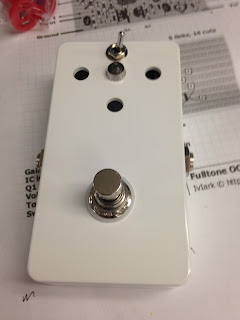I got excited and started the offboard wiring too soon. I should've stuck with the circuit board and seen it all the way through. I am full of regret.
I wasn't originally planning on testing the thing before enclosing it all up, which was extremely dumb. That planned has currently changed.
After my last post, I took off the socket spider because it is dumb.
Later, hater.
Blurry picture of something.
Added a bunch of extension wires
Bought a new socket. Big moves.
Here's what I had in the enclosure at this point.
I needed to take the pots out of the enclosure so I could connect them to the board.
Tone wire has lugs 2&3 going to ground, so I bent them with pliers and used one wire.
Gain pot has lugs 2&3 going to the same spot on the board, so I did the same.
The volume pot goes to 3 distinct locations (1&2 to different spots on the board, 3 to the 3PDT switch). I wrote down which wire was what so I wouldn't get confused later.
My next time in the lab, two wires broke off. One was the output wire on the switch, the other was one of the IC extension wires. I put that wire right back, but I had a lot of trouble fixing this wire on the switch.
It took forever to get the soldered piece of wire off of the lug.
I suck at soldering so the lug actually fell off of the switch, which I didn't know could even happen.
I got really frustrated after this, so I took a couple of days off.






































